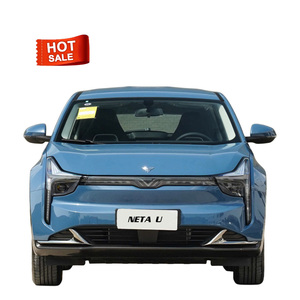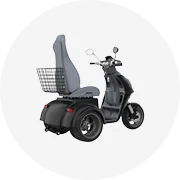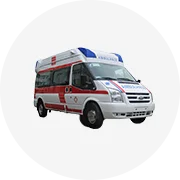Types of 2 Kayak Trailers
Kayak trailers are specially designed to transport kayaks conveniently and securely. For those looking to transport multiple kayaks, particularly two kayaks, there are various trailer options available to meet specific needs and preferences.
Utility Trailer
Versatile and flexible open trailers designed for multiple tasks. Kayak racks can be adjusted or removed, making them highly customizable for transporting kayaks, canoes, paddleboards, and other equipment.
Best for: Multi-purpose use, versatility, transportation of various water sports equipment
Folding Kayak Trailer
Compact and lightweight trailers that can be folded into a smaller size for easy storage and transportation when not in use. Ideal for those with limited garage space.
Best for: Limited storage space, ease of handling, portability
Dual Kayak Trailer
Specifically designed to carry two kayaks simultaneously. More extensive than single kayak trailers but offer better versatility and efficiency for pairs of paddlers.
Best for: Couples, families, or friends who kayak together regularly
Boat Trailer
Primarily designed for larger vessels but can be adapted to transport multiple kayaks with the installation of kayak carriers or racks to hold the kayaks securely.
Best for: Group transportation, kayaking clubs, organizations
Custom Kayak Trailer
Trailers specifically designed and manufactured to meet individual requirements and specifications, with customization options including trailer size, carrying capacity, and special features.
Best for: Serious paddlers with specific needs, unique kayak configurations
Single Kayak Trailer
Designed to transport one kayak, these smaller and more affordable trailers can sometimes be modified to carry a second kayak with additional accessories.
Best for: Individual paddlers, budget-conscious buyers, occasional dual transport
Expert Tip: When choosing between trailer types for two kayaks, consider not just your immediate needs but also future requirements. A utility trailer offers the most flexibility if you might transport different equipment in the future, while a dedicated dual kayak trailer provides the most secure and specialized transport for exactly two kayaks.
| Trailer Type | Suitable for 2 Kayaks | Advantages | Disadvantages |
|---|---|---|---|
| Utility Trailer | Yes, with proper racks | Versatile, customizable, multi-purpose | May require additional equipment for secure kayak mounting |
| Folding Kayak Trailer | Yes | Space-saving, easy storage, portable | Generally lower weight capacity, less robust construction |
| Dual Kayak Trailer | Yes, specifically designed for 2 | Purpose-built, secure transport, optimal design | Limited flexibility for other uses |
| Boat Trailer | Yes, with modifications | Sturdy, higher capacity, durable | Larger, heavier, potentially overkill for just 2 kayaks |
| Custom Kayak Trailer | Yes, as specified | Tailored to exact needs, specialized features | Higher cost, longer procurement time |
Specifications of Kayak Trailers
When purchasing a double kayak trailer, it's crucial to understand the specifications to ensure it meets your requirements. The right specifications will determine the trailer's performance, durability, and suitability for your specific kayaks.
Capacity
The number of kayaks a trailer can hold varies by model. While you're looking for a 2-kayak trailer, some models can accommodate up to six kayaks with the proper configuration. Always verify the weight capacity matches your kayaks' combined weight plus any additional gear.
Weight
Trailer weight is a critical consideration that affects towability. Lightweight trailers (typically 100-300 lbs empty) are easier to tow but may have lower capacity. Always check your vehicle's towing capacity and ensure the fully loaded trailer weight remains within safe limits.
Material
Common construction materials include:
- Aluminum: Lightweight, rust-resistant, low maintenance, but typically more expensive
- Steel: More durable, higher load capacity, less expensive, but heavier and requires rust protection
- Galvanized Steel: Better corrosion resistance than regular steel, good middle-ground option
Wheel Size
Wheel size affects performance and stability:
- Larger wheels (13"+): Better for rough terrain, smoother ride, improved stability
- Smaller wheels: More compact, lighter, better for storage, but less suitable for off-road conditions
Adjustability
Many quality kayak trailers offer adjustable cradles and supports to accommodate kayaks of different sizes and shapes. This versatility is especially valuable for households with multiple kayak types or for those planning to upgrade their kayaks in the future.
Security Features
Look for trailers with robust security features such as:
- Lockable cradles or racks
- Heavy-duty tie-down points
- Integrated locking mechanisms
- Anti-theft trailer hitches
Trailer Dimensions
Consider the overall dimensions when not in use:
- Length: Typically 10-14 feet for 2-kayak trailers
- Width: Usually 4-6 feet
- Height: Varies based on rack system design
Folding models can reduce storage footprint by 50-70%.
Additional Features
Value-adding features to consider:
- LED lighting systems
- Spare tire mount
- Integrated storage boxes
- Loading assistance systems
- Quick-release mechanisms
Expert Advice: When selecting a 2-kayak trailer, prioritize quality construction and appropriate weight capacity over lower cost. A well-built trailer will provide years of reliable service and better protect your kayaking investment. For coastal paddlers, consider spending extra for marine-grade materials and components that resist saltwater corrosion.
Maintenance of Kayak Trailers
Proper maintenance is essential to ensure your kayak trailer functions correctly and extends its lifespan. Regular upkeep prevents breakdowns, maintains safety, and preserves your investment.
Regular Inspection
Conduct thorough inspections before and after each use. Check for signs of wear, damage, or loose components. Pay special attention to the trailer frame, connection points, wheel bearings, and securing mechanisms. Early detection of issues can prevent more significant problems down the road.
Cleaning
After each use, especially in saltwater environments, thoroughly clean your trailer. Use fresh water and mild soap to remove dirt, grime, salt deposits, and road debris. Pay special attention to joints, connections, and moving parts where corrosive materials might accumulate.
Lubrication
Regularly lubricate all moving parts including wheel bearings, hinges, folding mechanisms, and winches. Use marine-grade grease for components that may be exposed to water. Apply a silicone-based lubricant to joints and moving parts that don't bear heavy loads.
Tire Maintenance
Check tire pressure before every trip and maintain proper inflation according to manufacturer specifications. Inspect tires for wear patterns, cracks, or damage. Rotate tires every 2,000-3,000 miles to ensure even wear, and replace them when the tread depth becomes insufficient.
Secure Load Systems
Regularly inspect straps, tie-downs, and securing mechanisms for fraying, stretching, or damage. Replace worn straps immediately, as they are critical safety components. Test locking mechanisms to ensure they function properly and apply lubricant to prevent seizing.
Proper Storage
When not in use, store the kayak trailer in a dry, covered location away from direct sunlight and extreme weather. If outdoor storage is unavoidable, use a weather-resistant cover. For folding trailers, follow the manufacturer's instructions for long-term storage position.
Rust Prevention
For steel trailers, monitor for rust and address it immediately. Apply rust-inhibiting paint or coating to vulnerable areas. For aluminum trailers, check for galvanic corrosion at connection points with dissimilar metals. Consider applying a protective wax coating to extend the life of painted surfaces.
| Maintenance Task | Frequency | Materials Needed | Importance |
|---|---|---|---|
| Visual inspection | Before and after each use | None | Critical |
| Cleaning | After each use (especially saltwater) | Mild soap, fresh water, soft brush | High |
| Lubrication of moving parts | Every 3-6 months or 500 miles | Marine-grade grease, silicone spray | High |
| Tire pressure check | Before each trip | Tire pressure gauge | Critical |
| Wheel bearing check | Annually or every 2,000 miles | Jack, wrench set, bearing grease | High |
| Strap and tie-down inspection | Before each use | None | Critical |
| Rust treatment (steel trailers) | Every 6-12 months | Rust converter, protective paint | Medium-High |
Safety Warning: Never tow a trailer with damaged tires, faulty lights, or compromised securing systems. Always perform a complete safety check before hitting the road. Remember that you're responsible not only for your equipment but also for the safety of other road users.
How to Choose a 2-Kayak Trailer
Selecting the right 2-kayak trailer requires careful consideration of several factors to ensure it meets your specific needs and provides safe, reliable transportation for your valuable kayaks.
Key Selection Criteria
Kayak Size and Weight
Measure your kayaks' dimensions (length, width, height) and weigh them fully loaded with gear. Choose a trailer with specifications that exceed your requirements by at least 20% for a safety margin. Remember that kayaks vary significantly in size—from 8-foot recreational models to 18-foot sea kayaks.
Vehicle Compatibility
Consider your towing vehicle's capacity and hitch type. Smaller vehicles may handle lightweight aluminum trailers better, while larger vehicles can accommodate heavier steel options. Verify your vehicle's towing capacity and ensure the trailer hitch is compatible with your vehicle's receiver.
Durability and Construction
Evaluate the quality of materials and construction. Look for:
- Welded (rather than bolted) frame connections for greater strength
- Powder-coated or galvanized finishes for corrosion resistance
- Quality wheel bearings designed for marine environments
- Sturdy, adjustable kayak cradles or support systems
Storage Considerations
Measure your available storage space and choose a trailer that fits when not in use. Folding models offer significant advantages for those with limited space but typically cost more. Some models can be stored vertically to minimize their footprint.
Expert Recommendation: When in doubt between two models, opt for the one with higher quality materials and construction rather than additional features. A well-built basic trailer will outperform and outlast a feature-rich but poorly constructed alternative. Quality kayak cradles and secure tie-down systems should be your top priorities.
Budget Considerations
Kayak trailers range significantly in price:
- Economy ($500-800): Basic steel construction, limited features
- Mid-range ($800-1,500): Better quality materials, improved features
- Premium ($1,500+): Highest quality materials, advanced features, specialized designs
Remember that quality trailers protect valuable kayaks and provide years of service, making them a worthwhile investment.
Safety Features
Prioritize trailers with robust safety features:
- Quality lighting systems that comply with regulations
- Reflective elements for improved visibility
- Secure, redundant tie-down systems
- Safety chains and proper hitch mechanisms
- Stability features to prevent swaying
Lightweight Aluminum Option
Ideal for those who prioritize ease of handling and corrosion resistance. These trailers typically weigh 30-40% less than comparable steel models, making them easier to maneuver manually and requiring less fuel to tow.
Perfect for: Coastal paddlers, those with smaller towing vehicles, solo handlers
Heavy-Duty Steel Option
Best for those who need maximum durability and load capacity. These trailers offer superior strength and typically cost less initially, though they require more maintenance to prevent rust.
Perfect for: Heavy kayaks, frequent long-distance transport, rough terrain
How to DIY and Replace 2-Kayak Trailer Parts
Maintaining and replacing parts on your 2-kayak trailer can save money and extend its useful life. With the right tools and knowledge, many common repairs can be completed at home.
Essential Tools
- Complete wrench set (standard and metric)
- Socket set with ratchet
- Screwdriver set (Phillips and flathead)
- Jack and jack stands rated for your trailer's weight
- Rubber mallet
- Wire brush
- Rust converter/inhibitor
- Marine-grade grease
- Multimeter (for electrical troubleshooting)
- Tire pressure gauge
Common Replacement Parts
- Wheel hub assemblies
- Bearings and bearing seals
- Tires and wheels
- Axle components
- Lighting components
- Wiring harness
- Coupler and hitch components
- Tie-down straps and hardware
- Kayak cradles or supports
- Fenders
Safety First: Always disconnect the trailer from the towing vehicle and ensure it's properly supported before beginning any maintenance work. Never rely solely on a jack to support the trailer while working underneath it—always use properly rated jack stands.
Step-by-Step Guide to Common Repairs
Replacing Wheel Bearings
Wheel bearings should be inspected regularly and replaced at the first sign of wear.
- Jack up the trailer and secure it with jack stands
- Remove the wheel
- Remove the dust cap, cotter pin, castle nut, and washer
- Carefully pull the hub assembly off the spindle
- Remove old bearings and races using a hammer and punch if necessary
- Clean the hub thoroughly and inspect for damage
- Install new races, then pack new bearings with marine-grade grease
- Reinstall in reverse order, adjusting the castle nut properly
- Spin the wheel to ensure smooth operation
Replacing an Axle
A bent or damaged axle requires replacement for safe operation.
- Support the trailer frame securely with jack stands
- Remove both wheels
- Disconnect any brake lines or wiring connected to the axle
- Remove the U-bolts or hardware securing the axle to the frame
- Carefully remove the old axle
- Position the new axle and align it properly
- Secure with new U-bolts or hardware, torquing to specifications
- Reconnect any brake lines or wiring
- Reinstall wheels and lower the trailer
- Check alignment and adjust if necessary
Upgrading Kayak Supports
Better kayak cradles or supports can improve security and reduce wear on your kayaks.
- Remove the existing kayak supports, noting their mounting pattern
- Clean the mounting surfaces thoroughly
- Apply a rust inhibitor to any exposed metal
- Install the new cradles or supports using stainless steel hardware if possible
- Apply a thread-locking compound to prevent loosening from vibration
- Torque all bolts to manufacturer specifications
- Test the new supports with your kayaks to ensure proper fit
- Adjust padding or positioning as needed for optimal support
Replacing Trailer Lights
Functioning lights are legally required and essential for safety.
- Disconnect the trailer's wiring harness from the tow vehicle
- Remove the old light fixtures, noting wire connections
- Test the wiring with a multimeter to ensure proper function
- Install new LED lights if possible (more durable and brighter)
- Use marine-grade connectors and seal with heat-shrink tubing
- Apply dielectric grease to all connections to prevent corrosion
- Secure wiring with proper clips to prevent damage
- Test all lights with a helper or testing device
Maintenance Tip: Keep a log of all maintenance and repairs performed on your trailer, including dates and part numbers. This record will help you track maintenance intervals and quickly identify the correct replacement parts when needed. It can also increase resale value by demonstrating proper care.
Frequently Asked Questions
Yes, most kayak trailers can accommodate various kayak types, including sit-on-top and inflatable models. However, you'll need to ensure the trailer's support system is compatible with your specific kayak design. Sit-on-top kayaks typically have wider hulls that may require adjustable cradles or J-style supports. For inflatable kayaks, additional padding may be necessary to prevent damage from contact with trailer components. Always check the manufacturer's specifications regarding compatible kayak types and dimensions before purchase.
Yes, specialized kayak trailers designed for off-road use with ATVs or motorcycles are available. These trailers feature:
- Compact, lightweight designs (typically 100-200 lbs empty)
- Rugged construction with reinforced frames
- Higher ground clearance for clearing obstacles
- All-terrain tires with aggressive tread patterns
- Specialized hitches compatible with ATV/motorcycle mounting points
- Enhanced suspension systems for rough terrain
When selecting an off-road kayak trailer, ensure it's rated for the specific terrain you'll encounter and verify compatibility with your towing vehicle's hitch system and capacity.
Many kayak trailers can indeed transport other outdoor equipment with the right accessories or modifications. Utility-style kayak trailers are particularly versatile for this purpose. Options include:
- Adding bicycle racks or mounts to the trailer frame
- Installing gear boxes or waterproof containers for fishing equipment
- Using adapters to accommodate paddleboards, canoes, or surfboards
- Adding cargo nets or platforms for camping gear
When adapting your kayak trailer for multiple uses, ensure you don't exceed the trailer's weight capacity and that all items are properly secured. Some manufacturers offer modular systems specifically designed for multi-sport enthusiasts.
Regular maintenance is crucial for keeping your kayak trailer in optimal condition:
- After Each Use: Rinse thoroughly with fresh water (especially after exposure to saltwater), check tie-downs and securing systems, inspect tires for damage
- Monthly: Lubricate moving parts, check tire pressure, inspect wiring and lights, examine frame for signs of corrosion
- Seasonally: Repack wheel bearings, inspect axle(s), check suspension components, tighten all fasteners, test brakes if equipped
- Annually: Perform comprehensive inspection of all systems, replace worn components, touch up protective coatings or paint
For trailers used in saltwater environments, increase the frequency of inspections and lubrication. Always address small issues promptly to prevent more significant problems and safety hazards.
Legal requirements for towing kayak trailers vary by location but typically include:
- Proper registration and licensing of the trailer
- Functioning tail lights, brake lights, and turn signals
- Visible license plate with current tags
- Safety chains connecting trailer to tow vehicle
- Proper securing of load with appropriate tie-downs
- Reflectors and/or reflective tape in specified locations
- Compliance with width, height, and length restrictions
- Brake systems (typically required for trailers over certain weight thresholds)
Always check local and state regulations before traveling, as requirements may change across jurisdictional boundaries. When traveling internationally, research requirements well in advance.























































































































































































































































 浙公网安备 33010002000092号
浙公网安备 33010002000092号 浙B2-20120091-4
浙B2-20120091-4